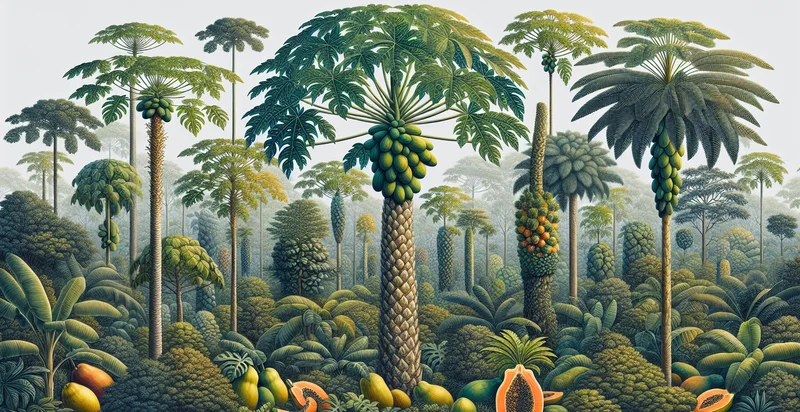Identify papaya species
using AI
Below is a free classifier to identify papaya species. Just upload your image, and our AI will predict what species of papaya it is - in just seconds.

Contact us for API access
Or, use Nyckel to build highly-accurate custom classifiers in just minutes. No PhD required.
Get started
import nyckel
credentials = nyckel.Credentials("YOUR_CLIENT_ID", "YOUR_CLIENT_SECRET")
nyckel.invoke("papaya-species", "your_image_url", credentials)
fetch('https://www.nyckel.com/v1/functions/papaya-species/invoke', {
method: 'POST',
headers: {
'Authorization': 'Bearer ' + 'YOUR_BEARER_TOKEN',
'Content-Type': 'application/json',
},
body: JSON.stringify(
{"data": "your_image_url"}
)
})
.then(response => response.json())
.then(data => console.log(data));
curl -X POST \
-H "Content-Type: application/json" \
-H "Authorization: Bearer YOUR_BEARER_TOKEN" \
-d '{"data": "your_image_url"}' \
https://www.nyckel.com/v1/functions/papaya-species/invoke
How this classifier works
To start, upload your image. Our AI tool will then predict what species of papaya it is.
This pretrained image model uses a Nyckel-created dataset and has 10 labels, including Carica Caudatus, Carica Papaya, Carica Papaya Var Mexicana, Carica Papaya Var Other, Carica Papaya Var Solo, Carica Stipulata, Vasconcellea Parviflora, Vasconcellea Pubescens, Vasconcellea Quercifolia and Vasconcellea X Heilbornii.
We'll also show a confidence score (the higher the number, the more confident the AI model is around what species of papaya it is).
Whether you're just curious or building papaya species detection into your application, we hope our classifier proves helpful.
Related Classifiers
Need to identify papaya species at scale?
Get API or Zapier access to this classifier for free. It's perfect for:
- Agricultural Research: The 'papaya species' identifier can aid researchers in studying the genetic diversity of papaya plants. By accurately classifying species, scientists can investigate traits related to disease resistance, fruit quality, and climate adaptation.
- Supply Chain Management: Companies in the agricultural sector can use this tool to ensure that the correct species of papaya are being harvested and shipped. Accurate identification minimizes the risk of errors and helps maintain quality control throughout the supply chain.
- Pest and Disease Management: Farmers can leverage the identifier to quickly determine the species of papaya affected by pests or diseases. This information would enable them to implement targeted pest management strategies effectively and improve crop yield.
- Trade and Export Compliance: Exporters can utilize the classifier to ensure they are meeting regional regulatory requirements concerning specific papaya species. This helps prevent potential penalties and facilitates smoother international trade processes.
- Consumer Education: Retailers can employ the species identifier to provide consumers with detailed information on the types of papaya available, including their taste profiles and nutritional benefits. This can enhance shopping experiences and promote healthy eating habits.
- Genetic Conservation: Environmental organizations can use the identifier to monitor and conserve diverse papaya species within their habitats. By identifying and tracking these plants, they can develop strategies to protect genetic diversity and support ecological balance.
- Food Processing Industry: Companies in the food processing sector can use the identifier to ensure they are using the correct species of papaya for specific products. Accurate classification helps maintain brand quality and prevents product inconsistencies, ultimately enhancing customer satisfaction.


